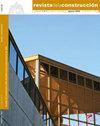Effects of particle size optimization of quartz sand on rheology and ductility of engineered cementitious composites
IF 1.4
4区 工程技术
引用次数: 0
Abstract
In this study, the effect of particle size of quartz sand on the fresh and hardened properties of engineered cementitious composites (ECC) was investigated. For this purpose, three ECC mixtures that are identical except for the gradation of quartz sands used in their composition were designed. One of the mixtures includes a combination of quartz sands with amounts determined by the Andreasen and Andersen particle size optimization model while the remaining two have a finer and a coarser gradation. In the fresh state, mini slump, mini V-funnel and bleeding tests were applied, and rheological parameters were determined according to Bingham and modified Bingham models by using a rotational viscometer. In the hardened state, flexural strengths, mid-span deflections and numbers of microcracks formed under flexural loading were determined at 7 and 28 days. It was observed that the particle size optimization of the quartz sand can provide a balance between flow and bleeding characteristics of ECC mixtures. Although a reduction in flexural strength occurred at both ages in the optimized ECC mixture, the deflection capacity and the crack formation capacity under loading were significantly increased, reaching a deflection value of over 10 mm with at least 11 cracks formed during the test. As a result, it was revealed that particle size optimization can yield a mixture with the highest ductility without compromising the workability of ECC.石英砂粒径优化对工程胶凝复合材料流变性和延性的影响
研究了石英砂粒径对工程胶凝复合材料(ECC)新鲜性能和硬化性能的影响。为此,设计了三种相同的ECC混合物,除了其组成中使用的石英砂级配。其中一种混合物包括石英砂的组合,其数量由Andreasen和Andersen粒度优化模型决定,而其余两种具有更细和更粗的级配。在新鲜状态下,进行了小坍落度、小v漏斗和放血试验,并利用旋转粘度计根据Bingham模型和修正Bingham模型确定了流变参数。在硬化状态下,分别在第7天和第28天测定试件的抗弯强度、跨中挠度和微裂纹数量。结果表明,优化石英砂的粒径可以平衡ECC混合料的流动和出血特性。优化后的ECC混合料在两个龄期抗弯强度均有所降低,但在荷载作用下挠曲能力和裂缝形成能力均显著提高,挠曲值均超过10 mm,试验过程中至少形成11条裂缝。结果表明,粒径优化可以产生具有最高延展性的混合物,而不会影响ECC的可加工性。
本文章由计算机程序翻译,如有差异,请以英文原文为准。
求助全文
约1分钟内获得全文
求助全文
来源期刊

Revista de la Construccion
工程技术-工程:土木
CiteScore
2.30
自引率
21.40%
发文量
0
期刊介绍:
The Journal of Construction is aimed at professionals, constructors, academics, researchers, companies, architects, engineers, and anyone who wishes to expand and update their knowledge about construction. We therefore invite all researchers, academics, and professionals to send their contributions for assessment and possible publication in this journal. The publications are free of publication charges.
OBJECTIVES
The objectives of the Journal of Construction are:
1. To disseminate new knowledge in all areas related to construction (Building, Civil Works, Materials, Business, Education, etc.).
2. To provide professionals in the area with material for discussion to refresh and update their knowledge.
3. To disseminate new applied technologies in construction nationally and internationally.
4. To provide national and foreign academics with an internationally endorsed medium in which to share their knowledge and debate the topics raised.
 求助内容:
求助内容: 应助结果提醒方式:
应助结果提醒方式:


